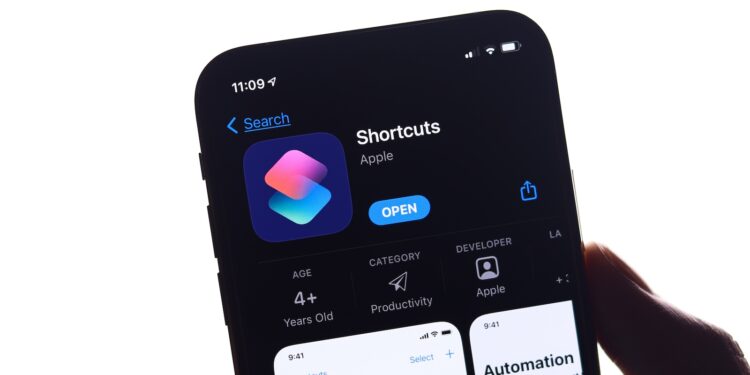Shortcuts is a powerful automation tool on Apple devices. What many people don't know: The app originally started as an independent project called Workflow and was later acquired by Apple. Since then, it has been deeply integrated into the system – especially on the iPhone, iPad, and Mac. Technically, little has changed in recent years, but that could soon change. According to a new report, Apple is planning a revamped version of Shortcuts with AI features. Find out exactly what that means here.
If you're a Shortcuts user, you know how convenient it is to automate recurring tasks with a tap or voice command. Nevertheless, the app feels a bit outdated compared to current AI solutions. While Microsoft's Copilot+ PCs integrates AI deeply into its operating system, Apple has been more reserved in this regard. The new plan to add AI features to Shortcuts heralds a shift in strategy.
What Apple is planning
In the current "Power On" newsletter, Mark Gurman reports that Apple is working on a new version of the Shortcuts app. It will be AI-powered and part of the Apple Intelligence initiative. The key difference from the previous version: You'll no longer have to manually compile your automations; instead, you'll be able to formulate them in natural language. The AI will then automatically convert your description into the corresponding shortcuts. Currently, you can use Shortcuts, for example, to turn off Wi-Fi at a specific location or to set a reminder on a specific day of the week. The new version would make it possible to formulate complex processes simply. For example:
- When you start a Zoom, Teams, Meet, or FaceTime call, the new AI could automatically activate Do Not Disturb mode, dim the display, open the Notes app, and capture participants' names, roles, and discussion topics during the call. After the call, the app creates an email with a summary and lists the to-dos.
This type of natural interaction would be particularly interesting for users who have had little experience with automation so far, but still want to make their processes more efficient.
The bigger picture
The integration of AI at the system level is not an isolated case. Microsoft's Copilot+ PCs demonstrate how voice control and AI agents can take over everyday tasks—not just within individual apps, but system-wide. Apple appears to be thinking along similar lines, although the timeline is delayed. Gurman reports that the new AI version of Shortcuts was originally planned for 2025, but now likely won't appear until 2026. This makes an appearance at WWDC on June 9 of this year unlikely.
Role of MCP
Another relevant topic in the context of AI automation is the Modular Capability Protocol (MCP). This is an open standard designed to enable the integration of AI assistants with external tools and data sources. Major tech companies like Google and OpenAI support MCP, even though they also operate their own AI solutions. It's still unclear whether Apple will adopt MCP. However, if it does, it would make Shortcuts significantly more powerful. It would then be possible to implement automations far beyond the device itself—for example, with cloud services, APIs, or third-party apps. This would significantly expand the potential of Shortcuts.
Apple Shortcuts about to jump into the next era
In the short term, nothing will likely change for you. The new version of the Shortcuts app won't arrive until 2026 at the earliest. But in the medium term, everything indicates that Apple wants to focus Shortcuts more on natural language and AI features. This will make creating automations easier, more flexible, and more accessible to more users. Whether Apple will also rely on open standards like MCP remains to be seen. But one thing is clear: They're heading in the right direction. AI will become a central component of system functions – including at Apple. (Image: Shutterstock / sdx15)
- Siri gets an AI upgrade – but Apple is arguing internally
- macOS 26 is probably called “Tahoe” – new design is coming
- Apple on a cost-cutting course: WWDC 2025 without any big surprises
- WWDC 2025: Apple skips iOS 19 and focuses on iOS 26





